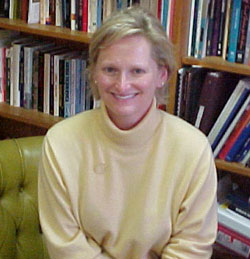TC Professors Crocco and Gaudelli are leading the design of a new multimedia curriculum called "Vietnam Now," which is based on footage from a 13-part documentary on Vietnam that aired on public television during the 1980s.
The people that brought you innovative social studies curricula about Hurricane Katrina and its aftermath and African-American history in New York City are now tackling the Vietnam War and its portrayal in the American media.
Margaret Crocco and Bill Gaudelli, both faculty members in TC’s Social Studies and Education program, are leading the design of a new multimedia curriculum called “Vietnam Now,” which is based on footage from a 13-part documentary on Vietnam that aired on WGBH public television in Boston during the 1980s. Crocco and Gaudelli have been given access not only to the 20 hours of documentary segments that were actually broadcast, but also to many additional hours of footage that have never been publicly shown.
The course is being funded by a grant from the Institute of Museum and Library Services awarded to the WGBH Media and Library Archives, the University of Massachusetts-Boston, and Columbia University. Columbia's Center for New Media Teaching and Learning (CCNMTL), under the direction of Columbia and TC faculty member Frank Moretti, is the lead partner for Columbia with WGBH. CCNMTL is working with Teachers College, the Columbia School of Journalism, and the Columbia University Department of History.
“Vietnam Now”is being offered on a pilot basis to an initial group of secondary and college educators who will gather at Teachers College in late June. That group will not only have an opportunity to work with the newly digitized materials but will also hear talks by guest faculty, including noted 1960s cultural historian Todd Gitlin and Vietnam War historian Charles Armstrong, both at Columbia, as well as experts on the use of digital media in teaching history and Vietnam War veterans.
The use of documentary footage is central to the whole effort, Crocco and Gaudelli say, with the curriculum focusing as much on media portrayal of the war as it does on the war itself.
“There is as much truthiness as truth in a documentary, at least potentially,” says Crocco, chair of TC’s Arts and Humanities Department, who two years ago led the creation of TC’s “Teaching The Levees” curriculum. That work, which was distributed to 30,000 schools, colleges, and community groups nationwide, also keyed off a documentary, When the Levees Broke: A Requiem in Four Acts, by director Spike Lee. “So it’s especially interesting to consider what we mean by truth in the context of history and representation, and to help students understand that perspective is exceedingly important in the teaching and learning of history.”
“We did a segment in the “Teaching The Levees” curriculum that used that famous moment of Bush in Jackson Square where the klieg lights were set up. People thought, in fact, that electricity had come back to downtown New Orleans. And when he was done with his presentation, of course, the electricity vanished with him. So the power of media to create a sense of reality is mediated by human agency, the way that textbooks are, too.
And whether the medium is a book or a film, students need to be able to get behind the curtain and see who’s there manipulating what we know and don’t know about.”
Perhaps the most powerful aspect of the course offering is the unvarnished nature of the combat footage that WGBH presented during the 1980s.
“Vietnam was really the last war in which the government did not regulate the access of the media, and it was a time during which television was bringing into Americans’ living rooms the truly brutal nature of war,” Gaudelli says. “Since then, governments everywhere have pretty much sanitized war coverage. So in many ways the curriculum is a commentary on how the media presents social issues today.”
Then, too, he says, aspects of the Vietnam conflict that were not at the forefront of Americans’ consciousness decades ago emerge now with greater clarity.
“Using digital media resources makes it easier to get beyond the dyadic representation of the War as the United States and Vietnam,” Gaudelli says. “Vietnam was much more than that—a regional war that was also a proxy of the Cold War. The Russians were involved to some degree. The Chinese were involved, the United States, of course, and of course Laos, Cambodia, and the Indo-China Region as a whole. So there really is a much broader global history here that can be told with the documents we now have access to.”
And then there are the current-day perspectives of people who were themselves key actors in the conflict.
“We’re going to have interviews of Robert McNamara, for example, who was Secretary of Defense as the War was unfolding,” Crocco says. “And then we have the experience of The Fog of War, of Robert McNamara’s reflecting back on the decisions that were made, and the incredible evolution of his perspective. [The Fog of War: Eleven Lessons from the Life of Robert S. McNamara is a documentary film by the director Errol Morris.] So, to hear someone say, ‘I was wrong,’ or ‘we were misguided,’ and to have that in someone’s own words where one can both hear as well as look at the body image, the messages that McNamara sent as he sat on that stage in what was truly a confessional experience, is quite amazing.”
Published Wednesday, Apr. 29, 2009
